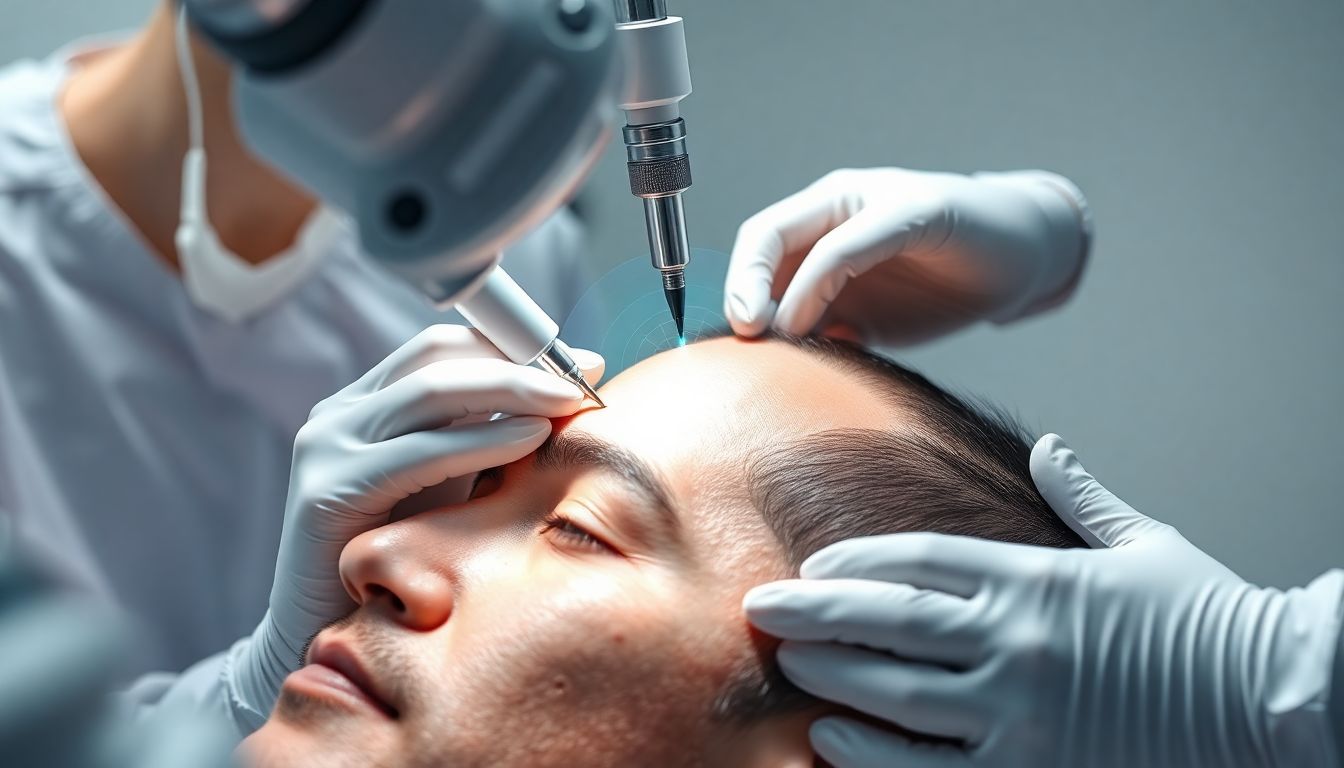Losing hair is difficult. It makes you feel like you’re not quite whole and has an enormous impact on how you perceive yourself. But here’s the good part: hair transplantation has taken great strides. New technology is making it easier than ever for you to have that natural-looking hair and faster-easing healing times for you. These improvements in hair transplant surgery now give more precise results.
Hair transplant technology has always been on that upward trend. It does mean great options for you. Come along, let’s go out there and see how hair transplant has undergone these awesome changes.
Understanding the Changing Face of Hair Transplants
Hair transplants are now really great. Old techniques had their limitations. Most of the time, those didn’t appear natural.
From Punch Grafts to Newer Techniques
In the past, the doctors took their hair in punch grafts. These were such big clumps of hair that many looked like plugs. In the modern method of hair transplant, much smaller grafts are used for a natural appearance.
Motivation Towards the Advancement of Technology
Then again, what made hair transplant technology evolve so much? There were calls for enhanced results! Technology in other spheres also kept on improving.
Fueled by Precision: Follicular Unit Extraction (FUE) and Its Advancements in Technology
FUE, or Follicular Unit Extraction, is currently the most common technique. It’s a lot better than old techniques. FUE is done by taking single hair follicles. They are placed where needed by the surgeon. Therefore, it does not leave large scars, and also looks more natural.
The Rise of Robotic FUE
Robots help with FUE! Robotic systems for hair follicle extraction add a lot of precision-originallythey work much faster. This technology can locate and grab hair follicles with high precision.
Powered Punches and Automated Extraction Devices
There is a special tool for FUE-all this with powered punch control over the depth and several more automated extraction systems. All these tools improve graft quality and estimate the damage to hair follicles.
Designs and Techniques for Natural Results in Implantation
How well the surgeon places the hair matters a lot. It, indeed, can determine how natural it instantly appears after the surgery. Advanced techniques are directed exactly to these factors when fresh hairlines are drawn to looking realistic.
Direct Hair Implantation (DHI)
DHI is very cool. It’s a kind of one-step process, where hair is placed by an implanter pen directly into the scalp. DHI increases the number of surviving grafts.
Sapphire Blade for Slits Creation
Sapphire blades are very sharp. These blades are precision blades made by surgeons for small cuts to insert the hair. It minimizes scarring!
Beyond Transplantation: Technologies Enhancing Graft Survival and Hair Growth
The new age of technologies embraces the best options in growing well after transplantation. Innovations that will preserve the health of grafts and spur their growth are some of these features.
Platelet-Rich Plasma (PRP) Therapy
PRP means Platelet Rich Plasma. This is blood which is separated from the body and uses blood platelets, making an injection directly to the scalp. This helps in increasing the hair growth and healing.
Low-Level Laser Therapy (LLLT)
Low-Level Laser Therapy, or LLLT, uses lasers to promote hair growth and to reduce post-operative swelling.
Future Frontiers: What’s Next in Hair Transplant Technology?
What’s going to happen next with hair transplants? Some crazy things are happening in research right now.
Hair Cloning and Multiplication
Imagine that hair could be cloned! Hair cloning and multiplication may alter the paradigm of donor hair shortage. That is to say that not having enough hair for a transplant will become a thing of the past.
Artificial Intelligence (AI) in Hair Transplant Planning
This would revolutionize transplant planning by doctors, helping with the exact positioning of grafts and predicting growth patterns.
Conclusion
Hair transplantation technology has come very far. FUE, robotic-assisted surgery, and DHI are all game-changers. With it come better results; expect faster healing; increased survival of hair grafts.
If you are considering having a hair transplant, you should talk to a well-qualified surgeon. They will be able to guide you through all available options.










